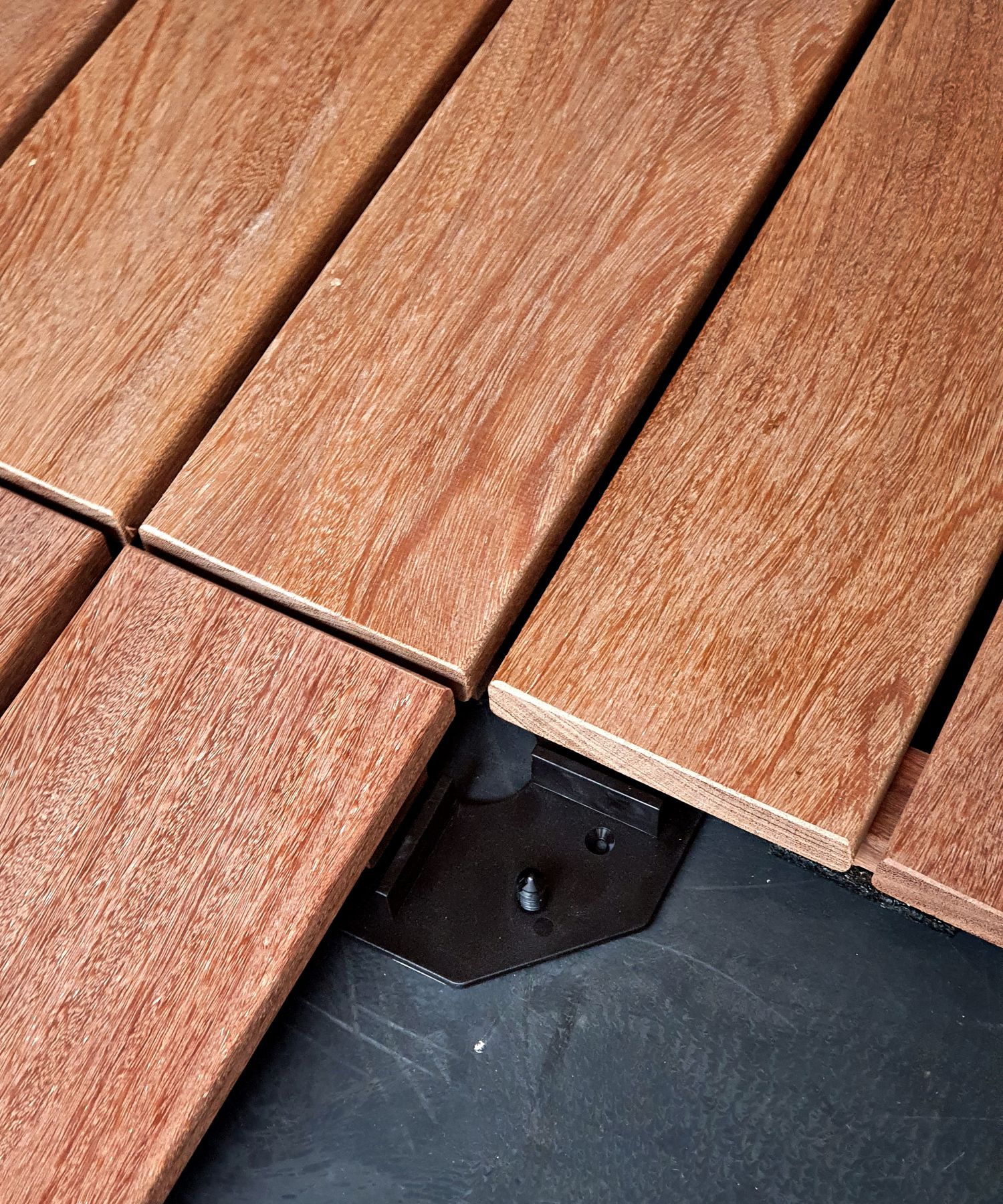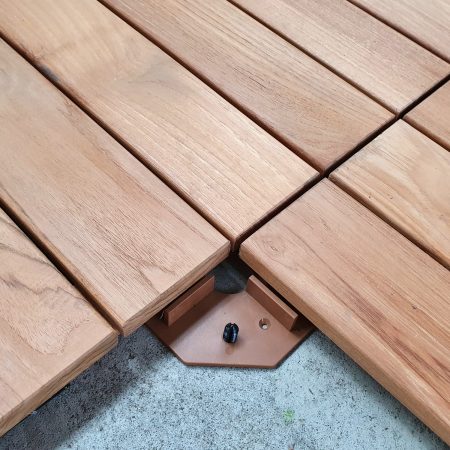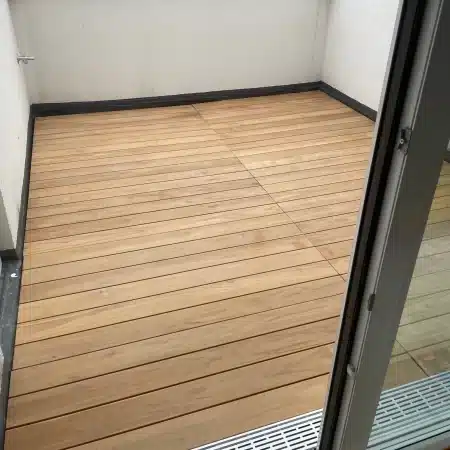Cumaru Elements 120mm
FSC 100%
ab 180,00 € m²
The FSC® 100%-certified Cumaru elements, made from 120mm wide Cumaru decking boards, are concealed screwed and mounted on a Cumaru substructure. The elements are easy to assemble and dismantle.
Dimensions
| length element | 30 cm to 270 cm (please select) |
| width element | 24,5cm to 99,5cm (Please select) |
| plank element | 2 to 8 (depending on the element width) |
| Wide planks | 120 mm |
| Strength floorboards | 21 mm |
| assembly height | 47mm or 71mm |
method of construction
| Substructure | already mounted |
| Gland | Concealed stainless steel |
| feet | Rubber granulate building material class DIN 4102 B |
| elements connection | for connection adapter |
Features
| Species | Cumaru (Dipteryx odorata) |
| Origin | Peru, FSC® 100% certified |
| Quality | Premium quality from BioMaderas |
| Surface | sanded smooth |
| durability | Class 1 |
Guide
| Online patio planner | laying plan and get offer |
| wood pattern | free order |
| Volume discounts | 1% Discount per €1.000 purchase value - up to max. 15% |
Comparison of terrace wood
What our selected decking wood has in common: ✓ high durability ✓ very good technical properties ✓ sustainable origin. Here is an overview of the special features:
Cumaru
✓ best durability
✓ particularly robust and scratch-resistant
✗ partly rough surface
✗ high power development
Tip: Floorboards should be sanded after weathering.
garapa
✓ smooth surface
✓ homogeneous, light color
✗ Ferrous substances lead to discolouration
✗ unbolted tendency to warp
Tip: Terrace cleaning removes discoloration and professional interim storage avoids warping.
jatoba
✓ smooth surface
✓ Rich color and grain
✗ unoiled tends to crack
✗ Colored ingredients wash out
Tip: Clean and oil decking after laying.
Teak
✓ best durability and dimensional stability
✓ Lowest risk of cracks and splinters
✗ relatively expensive
✗ no very long planks
Tip: Lay decking boards together.
discounts at Betterwood
The Betterwood you will receive a 1% discount for every €1.000 purchase value, up to a maximum of 15%. You can calculate your expected savings here:
The discount will be displayed on the shopping cart page and deducted from your purchase.
| Weight | n / A |
|---|---|
| Product Type | |
| Species | |
| Length | 60cm, 70cm, 80cm, 90cm, 100cm, 110cm, 120cm, 130cm, 140cm, 150cm, 160cm, 170cm, 180cm, 190cm, 200cm, 210cm, 220cm, 230cm, 240cm, 250cm, 260cm, 270cm |
| Width | |
| Quality | |
| Origin | |
| Color | |
| Surface | |
| Certificate | FSC®-certified (FSC 100%), from sustainable forest management and fair production |
| FSC® code | |
| method of construction | Flat substructure (47mm construction height), strong substructure (71mm construction height) |
Be the first to review Cumaru Elements 120mm
FSC 100%”
You need to make logged in to be able to give a rating.































Reviews
There are no reviews.